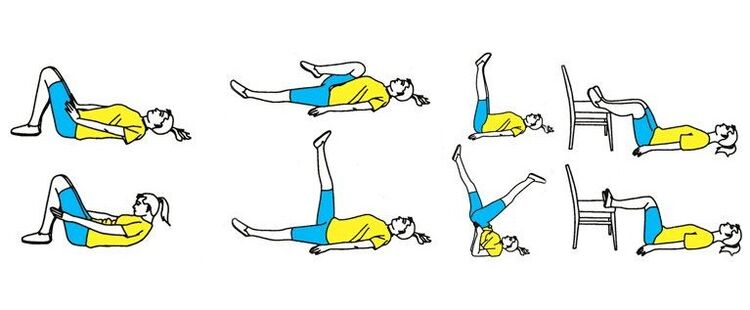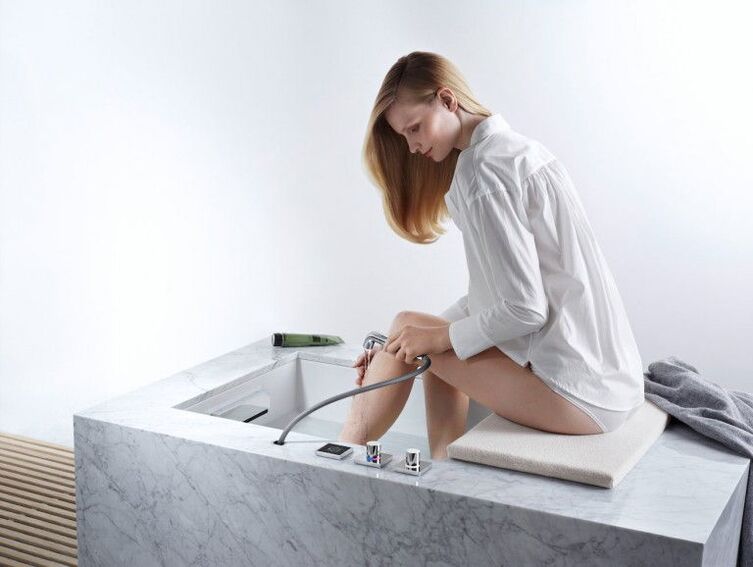Among the many problems faced by modern women, varicose veins in the legs do not take the last place. Regularly performing simple exercises for varicose veins of the legs can help in the early stages of the disease. Of course, the problem can be solved cardinally - by the method of surgical intervention, but often therapeutic physical activity is enough, it all depends on the degree of development of the disease. Before starting the fight against varicose veins, it is recommended to learn more about this disease and only then decide on the need for exercise therapy.

Types of varicose veins
Medicine divides varicose veins into:
- innate;
- acquired.
Both forms are expressed in the expansion of the veins in the legs. Acquired varicose veins are most often observed in women whose work involves a large or prolonged load on the legs. For example, the disease often develops among salespeople and teachers. In these professions, a woman has to stand for a long time, so the load on the legs may not be excessive, but constant, which in the end often leads to the appearance of pain and the development of varicose veins.
Congenital varicose veins are passed from grandmother to mother and from her to her daughter. If the older generation suffers from varicose veins, then the probability of its manifestation in the daughter is very high. To prevent the appearance of hereditary varicose veins of the legs, special exercises for varicose veins of the lower extremities will help. Regular physical exercises, a woman can not only prevent the onset of the disease, but also reduce external manifestations with the expansion of the veins in the legs.
It happens that varicose veins in a woman are not yet noticeable, but there is a risk of their appearance. In this case, it is recommended to regularly engage in certain physical gymnastics. The same exercises are also suitable for the identified initial expansion of the veins.
You should know that gymnastics for varicose veins of the lower extremities includes elements that require you to lie on your back with your legs raised. In addition to fighting varicose veins, the proposed set of exercises will help strengthen the abdominal muscles.
Prevention and treatment of leg veins
At risk of onset of the disease and in the initial stages of the disease, the following exercises are recommended.
- As you exhale, slowly raise your leg, then hold it vertical. This is followed by a slow lowering of the leg while inhaling. During the first exercise you will feel a certain tension in your lower leg caused by a slight pinching of your foot. The exercise is performed up to twenty times and repeated four times, alternating legs. The meaning of the exercise: when the leg is raised, blood flows out of the venous pockets more actively, and when the leg is lowered, the veins fill up with blood heavily. This type of leg vein training works effectively against varicose veins.
- While lying down, make circular movements with your feet. The movement of the foot should be smooth and unhurried, while the lower leg is loaded in one direction. Initially, the leg is on the floor, but after a few movements it can be raised slightly and the exercise continued, keeping the leg on weight. This movement of the foot is good for blood circulation.
If you are overweight, the load on the vein walls increases significantly, which undoubtedly leads to the development of varicose veins. To treat varicose veins, the doctor often recommends taking blood-thinning medication that makes the veins work easier. There are many such drugs, so it is categorically not recommended to take them on your own. It is better if an experienced doctor chooses the necessary funds for you.
The most important thing in preventing varicose veins is to strengthen the muscular walls of the veins, where they are relatively thin. This can be achieved not only through physical exercises or complex exercise therapy. Regular alternating showers can help against the weakening of the vein walls. Alternating exposure to hot and cold water perfectly trains the veins of the legs.

There are simple therapeutic exercises for standing work against varicose veins.
| Actions | quantity | Use |
|---|---|---|
| While standing, shift your body weight from heel to toe and vice versa. | 10-12 times | This exercise works the lower leg, resulting in a more active movement of blood through the veins; |
| Standing on tiptoe, slowly lower yourself onto the entire foot. | 10-12 times | This exercise allows you not only to develop veins, but also to strengthen the muscles of the lower leg and improve the shape and beauty of the legs. |
Work that requires a woman to sit all the time can also lead to the development of this disease. In this case, a slightly modernized rise to the toes will help. The only difference from the previously recommended exercise is that you need to heel your heels as sharply as possible and not be able to lift your heel very high.
Running, cycling or playground?
Physiotherapy exercises can recommend many different exercises to train the veins. Leisurely walking, jumping rope and other exercises work perfectly against varicose veins. Cycling helps a lot too, but there's a little subtlety here. Leg vein training is most active only when the seat is adjusted as high as possible so that only the toe can reach the bottom pedal. When riding with this bike setup, the lower leg is actively lowered, increased pressure is exerted on the veins, which improves blood circulation.
If you notice that with the expansion of your leg veins it manifested itself clearly, it is better not to hesitate, but to consult a doctor immediately. He will be able to provide you with an effective training plan if required. Only the right exercises help to keep the leg veins in top shape.
Among the many different programs and exercises to combat varicose veins, Dr. Highlight Bubnovsky, whose clinic is studying kinesitherapy as a means of combating a variety of diseases. In order to prevent varicose veins and to treat diseases that have already occurred, the specialists at the clinic develop individual exercise programs that take the individual characteristics of the patient into account.

























